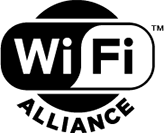How does Wi-Fi Alliance help ensure product compatibility and a good user experience for certified products?
Video
Wi-Fi Alliance News See All
The Beacon Blog See All
The Signal Podcast See All
Product Finder
Additional Resources
Frequently Asked Questions
Wi-Fi Alliance Member Publications
Passpoint for Hospitality
Nomadix
Passpoint in Hospitality
eleven


